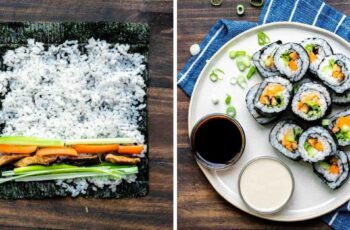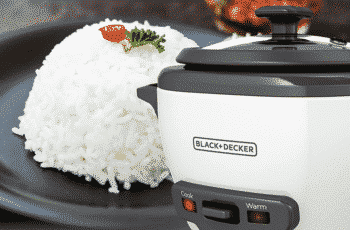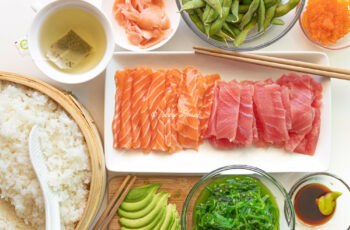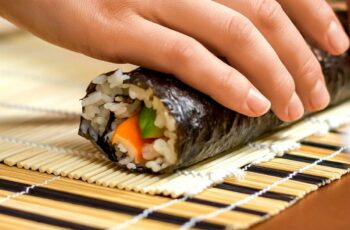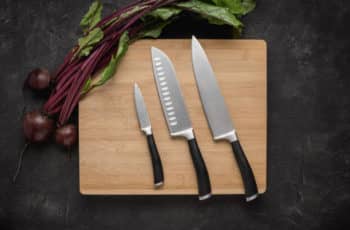Table of contents
- Related articles:
- What exactly is BASMATI RICE anyway?
- Conclusion
- ALL YOUR QUESTIONS ABOUT HOW TO MAKE BASMATI RICE ARE ANSWERED HERE
- Is the best way to make basmati?
- What is the ratio of water to basmati?
- Should you soak basmati rice before cooking?
- How to keep basmati from sticking?
- What happens if I don’t soak the basmati?
- How long do you soak basmati before cooking?
- What is special about basmati?
- Is basmati rice healthier than white rice?
- Why is basmati rice so expensive?
- How to choose basmati rice?
“You’ve been meaning to learn how to cook basmati rice. It’s not as hard as you think! Is too sticky? Does it clump together and not stay separate? Is it undercooked or overcooked? Here’s a quick guide to cooking basmati rice on the stove!
Basmati rice is a type of long-grain rice that has a distinctive aroma and flavor. It’s so delicious, you’ll never want to eat any other kind of again! The best part about cooking basmati rice on the stove is that it’s not only easy but also quick-you can have this tasty dish ready in no time at all. This blog post will teach you how to make perfect when cooked on the stovetop. Here are some tips for getting started.
Related articles:

What exactly is BASMATI RICE anyway?
The story of basmati rice is a long and complicated one. A true origin or definition has never been agreed upon by all, but most agree that it was first discovered in Pakistan over 5000 years ago. It’s become popular for its health properties as well–the grains are low on the glycemic index which means they absorb slower into your body than regular white rice does–making them healthier if you’re looking to maintain blood sugar levels!
Basmati rice is a fragrant long-grain variety that can be found in cuisines from India, Central Asia, and the Middle East. A staple of Indian cuisine, grains are thinner than other varieties such as Jasmine or Arborio Rice. has been grown for centuries by farmers on the banks of Pakistan’s Indus River Valley due to its high yield potential with minimal input needed during cultivation including water. The story goes that when Alexander came back after his invasion he sent some home with many soldiers who carried it all over North Africa – this was how people first got introduced to cooking their food using these aromatic rice! Most basmati rice imported into America must have aged at least six months
Basmati rice is a type of long-grain, aromatic, and nutty-tasting that can be found in the cuisines of many different cultures. As it originates from India where most people prefer to have white meat, basmati rice has been grown there for centuries as an alternative source of protein with less fat content than meats such as beef or chicken breast.
The locals also like having this variety because they are good at handling cold weather better than other types so can grow even during harsh winters when others would not survive without being imported. Rice is long-grain rice that smells like heaven. It’s fragrant and fluffy, making it the perfect choice for curry or pilaf dishes!
HOW TO COOK BASMATI RICE
prep time cook time serves
20 minutes 20 minutes 4
Ingredients
- 1 cup of basmati rice
- 1 1/2 cups of just-boiled water
- 2 tablespoons canola oil
- 3/4 teaspoon salt
The perfect recipe for a flavorful, aromatic dish. Follow these steps to make it:
- Wash the rice in cold water until the water runs clear and soak it for at least 20 minutes.
- Put on your kettle (or pot) of hot boiling water with 1 cup of unsalted butter or vegetable oil while you are waiting for all that time to pass – then drain through a fine metal sieve 2-3 times so as not to spoil flavor by adding too much salt during the cooking process
- Add enough salted boiling liquid (water mixed with any combination depending on how many people will be eating this meal), making sure there is about an inch above a level; bring back up again when ready
- Stir thoroughly before…..
is not only served as a side dish or main course but it’s also used to make desserts such as puddings and cakes
Conclusion
We’re so happy you found your way to our blog post about cooking! We know it can be a daunting task and we want to help. All of the questions, tips, and answers are here for you in one place on this page from how long it should cook to what is the difference between white and brown? Our hope is that after reading through all of these helpful information points, you will feel confident enough to try making some yourself. Remember-you’ve got everything you need right here at your fingertips. Happy cooking!
Visit our homepage to see more: BIRCH WOOD KITCHEN
ALL YOUR QUESTIONS ABOUT HOW TO MAKE BASMATI RICE ARE ANSWERED HERE
Is the best way to make basmati?
- Boil it in water with salt and butter, then let it cool before serving.
- Put all the ingredients into a pot, heat for about five minutes or until boiling, turn down the heat and simmer for 10 minutes.
What is the ratio of water to basmati?
The correct rice to water ratio is 1: 1.5 (1 cup of rice to 1.5 cups of water). Most people use 1 3/4 cups of water or even 2 cups of water, AND they rinse the rice which makes it waterlogged and makes the mushy rice problem even worse.
Should you soak basmati rice before cooking?
I recommend soaking them for up to 30 minutes. This will start the water absorption process, which means less time on the stove! Washing the before cooking will help remove the natural thin layer of starch, preventing them from sticking together after it’s cooked!
How to keep basmati from sticking?
8 tips to make non-stick Basmati:
- 1, Wash it properly. First thing, wash them properly. …
- 2, Soak it well. …
- 3, Use Ghee or Oil. …
- 4, Use Basmati Ratio. …
- 5, Place the container on a stand. …
- 6, Cook Rice On High Flame. …
- 7, Do not peek inside the pot during this process. …
- 8, Let it rest for a while.
What happens if I don’t soak the basmati?
Unless there’s something holding the flavor, it goes away quickly. … Because some water is soaked in, the cooking time is shortened, thus preserving the flavor. It is said that the taste of rice is what causes it when it is not soaked, rather than the texture, so that reaffirms my suspicions.
How long do you soak basmati before cooking?
Soaking rice: Soaking basmati before cooking is not essential, but in my experience, it gives better results. So don’t let anyone tell you otherwise. Soak rice for only 30 minutes before cooking. This helps absorb some of the water and helps the grains relax.
What is special about basmati?
Cooking with Tilda Basmati means light, delicate, individual grains. That’s because we grind our grains thoroughly and remove broken grains, which would otherwise release starch and cause the rice to become sticky. The seed is special in that it expands to twice its dry length during cooking
Is basmati rice healthier than white rice?
While both white and brown versions of providing important nutrients, brown rice contains more fiber, phosphorus, zinc, and B vitamins. Basmati brown rice is also lower on the glycemic index. However, white is easier to digest.
Why is basmati rice so expensive?
Rice is bought from the open market and then they are aged for a long time. This is a very time-consuming process and requires special conditions for storage and preservation. This adds to the overall cost of. This leads to an increase in the overall cost of .
How to choose basmati rice?
Even before it is cooked, good-quality basmati will have a nice aroma. If it doesn’t smell good, don’t buy it. Aroma is one of the best signs of good quality.
It is truly one of the royal varieties
- Rich in flavor, and is exotic.
- High nutritional content.
- Has a very strong fragrance.


